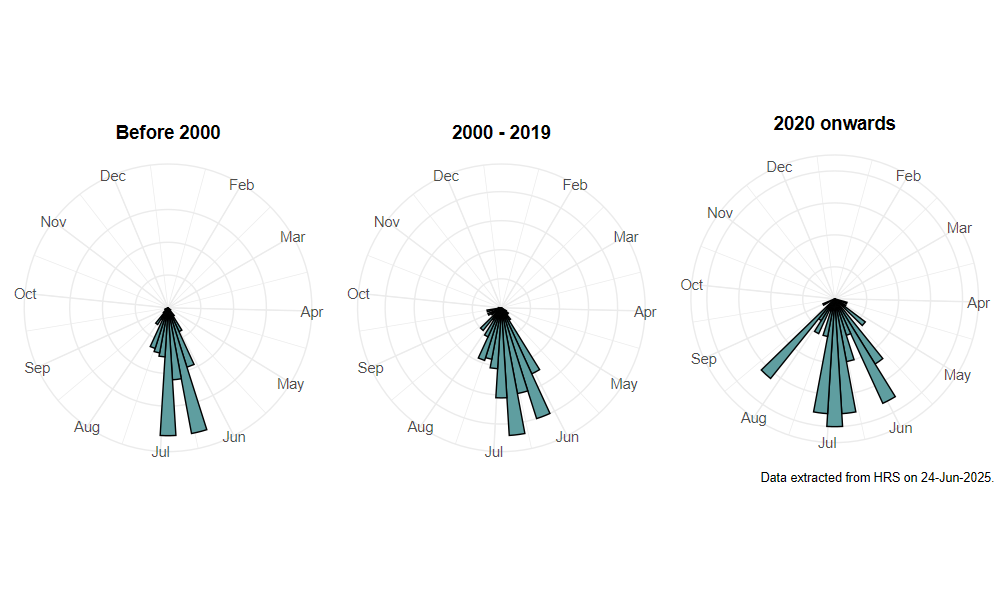Platycheirus ramsarensis Goeldlin de Tiefenau, Maibach & Speight, 1990
Identification
Identification difficulty = 3. ![]()
![]() according to Ball & Morris, 20241
according to Ball & Morris, 20241
Synonymy
One of the species split from Platycheirus clypeatus by Speight & Goeldlin (1990)2 and Goeldlin et al. (1990)3.
Biology
Larva unknown. It has been found in oligotrophic, wet situations beside moorland streams and lakes, usually where there are small flushes with abundant Carex or Juncus. sedges Carex sp. or rushes Juncus sp. Adults fly low down amongst stands of vegetation and will visit flowers such as Marsh Marigolds Caltha palustris.
Flight period
The following plots show the number of unique records per week excluding those reported to be of immature stages.

Distribution
This is a widely distributed upland species which occurs in acid situations such as boggy stream valleys. The majority of records are from Scotland, the Pennines and Wales, with a scatter from south-western England.

Trends
The following plots show the Frescalo TFactor vs year and a map of the rescaled frequency (all records) for the species.
-
Ball, S., & Morris, R. (2024). Hoverflies of Britain and Ireland. WILDGuides (3rd ed.). Oxford: Princeton University Press. ↩
-
Speight, M., & Goeldlin de Tiefanau, P. (1990). Keys to distinguish Platycheirus angustipes, P. europaeus, P. occultus and P. ramsarensis (Dipt., Syrphidae) from other clypeatus group species known in Europe. Dipterists Digest (first series), 5, 5–18. ↩
-
Goeldlin de Tiefanau, ., Maibach, A., & Speight, M. (1990). Sur quelques espèces de Platycheirus (Diptera, Syrphidae) nouvelles ou méconnues. Dipterists Digest (first series), 5, 19–43. ↩